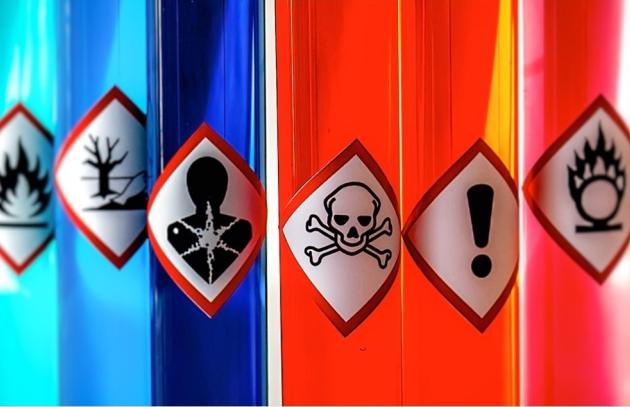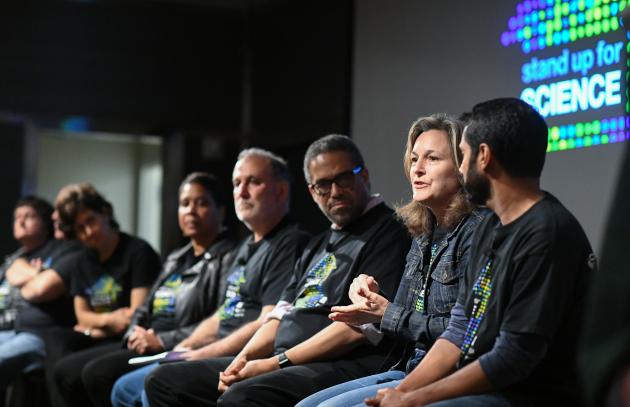Turning Science into Action
People are exposed to increasing amounts of toxic chemicals in air, food, water, personal care and cleaning products, at home and at work. The problem is so large, we cannot protect ourselves with individual actions alone - we need policy change.
That's why we share the science and best scientific methods to inform and guide policies that protect people from harmful chemicals, particularly those who are especially vulnerable such as pregnant people and children, and those who are disproportionately impacted.

How to Strengthen EPA's Mission to Protect Health
To help EPA put science and public health front and center, PRHE collaborated with top scientists and chemical policy experts from around the country to develop evidence-based recommendations to improve hazard and risk assessment, and prevent harms from chemicals and pollutants.
Major Policy Areas

Chemicals and TSCA
We analyze federal chemical policy and EPA's implementation of the updated Toxic Substances Control Act, the law that governs regulations of chemicals in commerce.

Science Integrity
PRHE developed the Navigation Guide systematic review methodology to better evaluate the quality and strength of the evidence on how hazardous chemicals impact health.

Industry Documents
From lead and tobacco to hiding the truth about fossil fuels and climate, polluters have a long history of manipulating science and public opinion to maintain their corporate interests. We help gather these documents as part of UCSF's Industry Documents Library.
Policy Strategies

Public Comments
We monitor EPA and other regulatory body actions and comment on whether they are following the best science and protecting health. Public comments are essential to holding government agencies accountable.

Legislative Briefings
PRHE planned legislative briefings to inform policymakers and staff about issues related to implementation of the Toxic Substances Control Act and science and decision making at EPA.

Science Action Network
PRHE launched the Science Action Network for Health and the Environment to bring together environmental health scientists to be a strong voice for science integrity and to prioritize health in chemical and environmental policy.
Published Papers
Fossil fuels contribute to climate change and petrochemicals, both of which increase maternal and child disease. Reducing fossil fuels can reap a double benefit for climate change and improved health.
EPA’s implementation of amended TSCA did not incorporate key scientific/methodological factors, underestimating health risks of chemical exposures, particularly to susceptible populations.
Widespread environmental contamination can directly interact with human immune system functions. Environmental effects on the immune system may influence human susceptibility to respiratory infections as well as the severity of infectious diseases, such as the severe acute respiratory syndrome coronavirus 2 (SARS-CoV-2). Furthermore, the efficacy of vaccines to respiratory diseases may be impacted by environmental exposures through immune perturbations. Given the quick pace of research about COVID-19 and associated risk factors, it is critical to identify and curate the streams of evidence quickly and effectively.
Systematic reviews of studies estimating the prevalence of exposure to selected occupational risk factors have been conducted to provide input data for estimations of the number of exposed workers. A critical part of systematic review methodology is to assess the quality of evidence across studies. In this article, we present the approach applied in these WHO/ILO systematic reviews for performing such assessments on studies of prevalence of exposure. It is called the Quality of Evidence in Studies estimating Prevalence of Exposure to Occupational risk factors (QoE-SPEO) approach. We describe QoE-SPEO’s development to date, demonstrate its feasibility reporting results from pilot testing and case studies, note its strengths and limitations, and suggest how QoE-SPEO should be tested and developed further.
Evidence-to-decision (EtD) frameworks provide a structured and transparent approach for groups of experts to use when formulating recommendations or making decisions. While extensively used for clinical and public health recommendations, EtD frameworks are not in widespread use in environmental health. This review sought to identify, compare and contrast key EtD frameworks for decisions on interventions used in clinical medicine, public health or environmental health. This information can be used to develop an EtD framework suitable for formulating recommendations for interventions in environmental health.
Climate change is one of the major global health threats to the world's population. Particularly vulnerable populations are affected, including women, pregnant women, children, the disabled, and the elderly, who comprise the majority of the poor globally. Additionally, the effects of climate change disproportionally affect disadvantaged communities, including low income and communities of color, and lower-income countries that are at highest risk of adverse impacts when disasters occur due to inequitable distribution of resources and their socioeconomic status.
Systematic reviews are routinely used to synthesize current science and evaluate the evidential strength and quality of resulting recommendations. For specific events, such as rare acute poisonings or preliminary reports of new drugs, we posit that case reports/studies and case series (human subjects research with no control group) may provide important evidence for systematic reviews.
